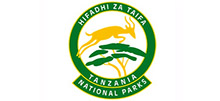Tanzania is one of Africa’s top safari destinations. This vibrant and beautiful country with exceptional parks and reserves, is blessed with the winning combination of unparalleled game viewing and dazzling tropical beaches. From the great migration of the Serengeti to the more remote parks, Tanzania Safari offers superb game viewing than any other safari destination in Africa. Almost 40% of the country is protected and set aside for conservation, which explains why Tanzania is renowned for its sheer numbers of wildlife. Just drop us a line today and our safari experts will help you to choose the best safari package based on your interest. Our safari tours are fully customizable; we are here to make your African dreams come true.
Unlike other safari destinations, Tanzania is accessible all year round. Our safari experts will advise you the best itinerary based on your safari dates. The dry season (from late June to October) is the most popular time for the Tanzania safari – mostly referred as a high/peak season. During this dry season, many people flock here for a chance to witness huge herds of wildebeest and zebra crossing the Mara River — panic ensues as they try to avoid the jaws of crocodiles and other predators waiting to pounce. The Great Migration is Tanzania’s headline attraction. One important thing to bear in mind, however, is the crowding that can occur in certain parks during these favorable periods.
From mid-December to early March is also a popular time to travel to Tanzania – the green season, and can be a spectacular time to visit, with the herds generally attracting a lot of predators and some real wildlife drama! Get ready to witness the Great Migration herds with their newly born calves take their first few steps. The chances for short rains may be presentable during this time of the year.
Should you wish to avoid the crowd, consider visiting Tanzania during the low season, usually from mid-March to early June or the month of November. Generally, the roads are good, well maintained and still very much passable even during the rains. However, it can get a little difficult if you want to travel to really remote areas during this period because of the rains. Some wildlife may be difficult to spot due to the long grasses in the parks and heavy rains, but for those who dream of nature at its best, it is a fantastic time.
Tanzania has a generally comfortable climate year-round, although there are significant regional variations. The tropical coast stays quite hot and humid with heavy and reliable rainfall, especially during the rainy season. The central plateau is cooler and arid. There are two rainy seasons—the heaviest rains usually fall from mid-March to early June, and a shorter period of rain occurs from November to mid-January. The dry season, with cooler temperatures, lasts from July to October. With altitudes ranging from 3,000 to 7,000 feet above sea level, average daytime temperatures are very comfortable and vary from 70° to 90°F, with a moderate 50° to 60°F at night.
Please keep in mind that these are averages, and that weather can be unpredictable. Be sure to check current weather conditions a few days before your departure. Also, always Remember to check the weather for each location on your itinerary, as conditions may vary.
January marks the end of the shorter rainy season, and Tanzania’s “short, dry season” begins, lasting for a few months before it begins to rain again in earnest in March. High temperatures in January are generally in the 80s F while lows range from the upper 50s to low 70s F. Travelers should be prepared for clear, sunny days with short-sleeved shirts and shorts or zip-off pants.

February is typically the warmest month in Tanzania, with high temperatures reaching the upper 80s F in some areas. Be prepared with short-sleeved shirts and shorts or zip-off pants. It is possible for the short rains to continue into February, so occasional showers are possible.

The beginning of March is much like February—warm and mostly dry. The long rainy season in Tanzania begins in mid-March. The humidity is high, and daily temperatures reach the mid- to upper 80s F. Temperatures typically do not cool off much at night—lows do not usually drop below about 60 F, and in some areas remain in the 70s. Afternoon tropical downpours are common, and we recommend a lightweight, “breathable,” waterproof rain jacket, rain pants and inexpensive rain poncho.
Now that you are above the cloud line the views of the rainforest below and the summit of Kilimanjaro above are simply breathtaking. Once the sun sets, the stars are overflowing in the night skies and create a truly peaceful environment.

As the heavy rains continue, you can expect conditions in April to be much the same as in March. Although it typically rains almost every day, it seldom rains all day. Heavy afternoon rain showers are common, and a lightweight, “breathable,” waterproof rain jacket, rain pants and inexpensive rain poncho are a must.

By May the landscape in Tanzania is usually lush and green as the heavy rains continue, with significant bursts of rain occurring most often in the afternoon. As in March and April, we recommend a lightweight, “breathable,” waterproof rain jacket, rain pants and inexpensive rain poncho.

The rains have ended for the most part by June (although you may still want a rain jacket just in case) and temperatures begin to drop as a cooler, dryer climate sets in for the next several months. Note that it can become very cold at night on the rim of the Ngorongoro Crater, and early morning game drives may be chilly before the sun comes up. Jackets or sweaters are recommended in the evenings, and warm hats, gloves and a scarf may be needed in the early morning. Temperatures in June range from the mid-40s to low 50s at night to the upper 70s to low 80s during the day. We recommend layering so that you can make adjustments as the sun comes out and daytime temperatures heat up. By midday you will want lightweight clothing—a T-shirt and shorts or zip-off pants.

July is another cool, dry month in Tanzania. It can be quite cold at night and in the early mornings, especially at higher elevations. Temperatures can drop as low as 40 F; be prepared with warm layers including jackets, sweaters, warm long pants and warm hats, gloves and a scarf. By midday, temperatures generally warm to the upper 70s—you’ll want to trade your warm layers for a short-sleeved shirt and shorts or zip-off pants.

The month of August is mild, with lows in the mid-50s F and highs in the upper 70s and low 80s F. A jacket or sweater is recommended for nights and early mornings, and a hat, gloves and a scarf may also be appreciated for cooler spells. Layers work best in order to be as comfortable as possible as temperatures shift throughout the day.

Temperatures in September tend to be comfortable during the day with highs in the low to mid-80s F while nights and early mornings can be cool, with temperatures in the upper 50s F. We recommend a jacket or sweater, long pants and a hat, gloves and a scarf. As the temperature warms during the day, be ready to shed your outer layers for a short-sleeved shirt and shorts or zip-off pants.

October is typically the last month of the long dry season, and it is still relatively cool, clear and sunny. Daytime temperatures will be mild, and evenings and early mornings will be comfortably cool. Temperatures will increase slightly, ranging from the low 60s F to the mid- to upper 80s F.

The short rains begin in November. These are much lighter and less predictable than the long rains. We recommend being prepared with a lightweight, “breathable,” waterproof rain jacket, rain pants and an inexpensive rain poncho. When it is not raining, temperatures will be pleasant, ranging from lows in the mid-60s F to highs in the low 80s F. The best approach is to go with a comfortable base layer when the days are clear and warm and to add warm and/or waterproof layers as needed.

The short rains continue in December, and clothing recommendations remain much the same as for November. Temperatures range from the mid-60s F to the low 80s F, and light rain is possible each day.

A wildlife safari is one of the biggest charms of any African adventure and Tanzania is perhaps the best country for a journey into the wild. Tanzania’s national parks are designed to suit all kinds of interests, preferences and comfort levels, and you can be rest assured that there is a safari which is perfect for you. Depending on your travel dates, budget and interest; our safari experts will guide you on planning where you should visit.
Tarangire National Park
Tarangire National Park is impressively splendid for its famous concentration of wild animals especially the elephants and it is also one of the finest birding destinations in East Africa. The name of the park originates from the Tarangire River that crosses the park and covers an area of 2850 km 2. The Tarangire River during the dry season (from July to October) shrinks and draws multitudes of thirsty wildlife. No matter the time of year! More so, the great baobab trees and large termite mounds that dot the landscape are like something out of a fairytale. As if it couldn’t get better, this park emulates the importance of national parks in Tanzania as currently, it is home to the fringe-eared oryx, greater kudu, and Ashy Starling. All of which are greatly endangered and can only be found in the Tarangire National Park.
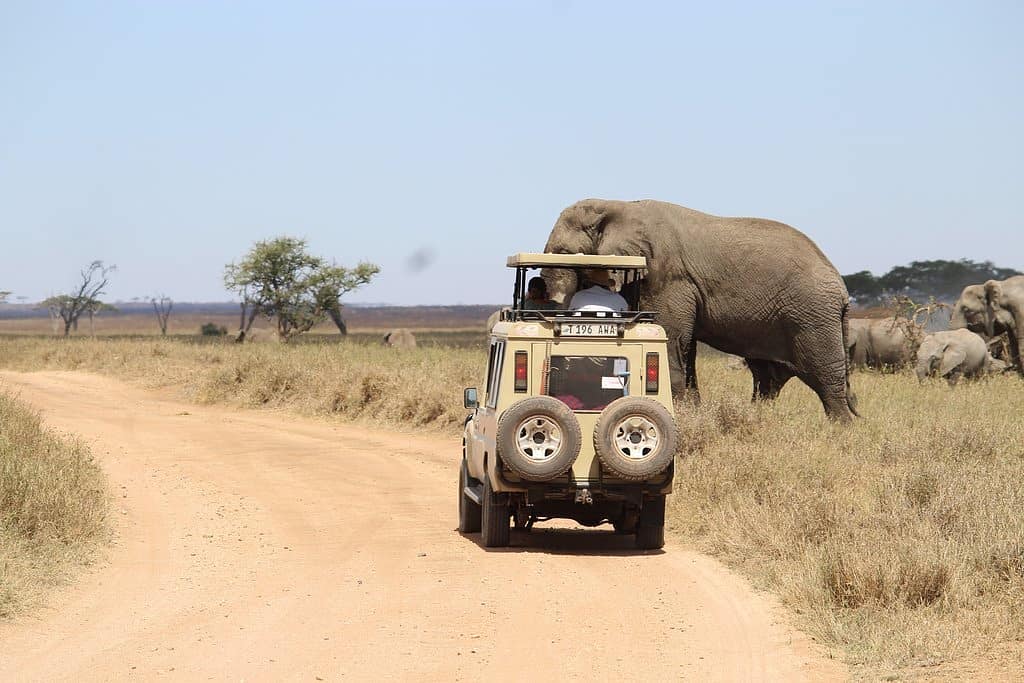
- Night safaris and walking safaris available
- Excellent accommodation options
- Concentrated wildlife viewing opportunities during dry season
- Over 550 different bird species
- Breathtaking scenery
- The Park can be accessed by road or air
- Animal sightings are difficult during wet season
- The park tends to get crowded during peak season
Best time to visit: July to October
Nearby Attractions: Arusha National Park, Lake Manyara National Park
Common Animal Sightings: Elephant, lion, leopard, cheetah, eland, impala, gazelle, hartebeest, buffalo, wildebeest and giraffe.
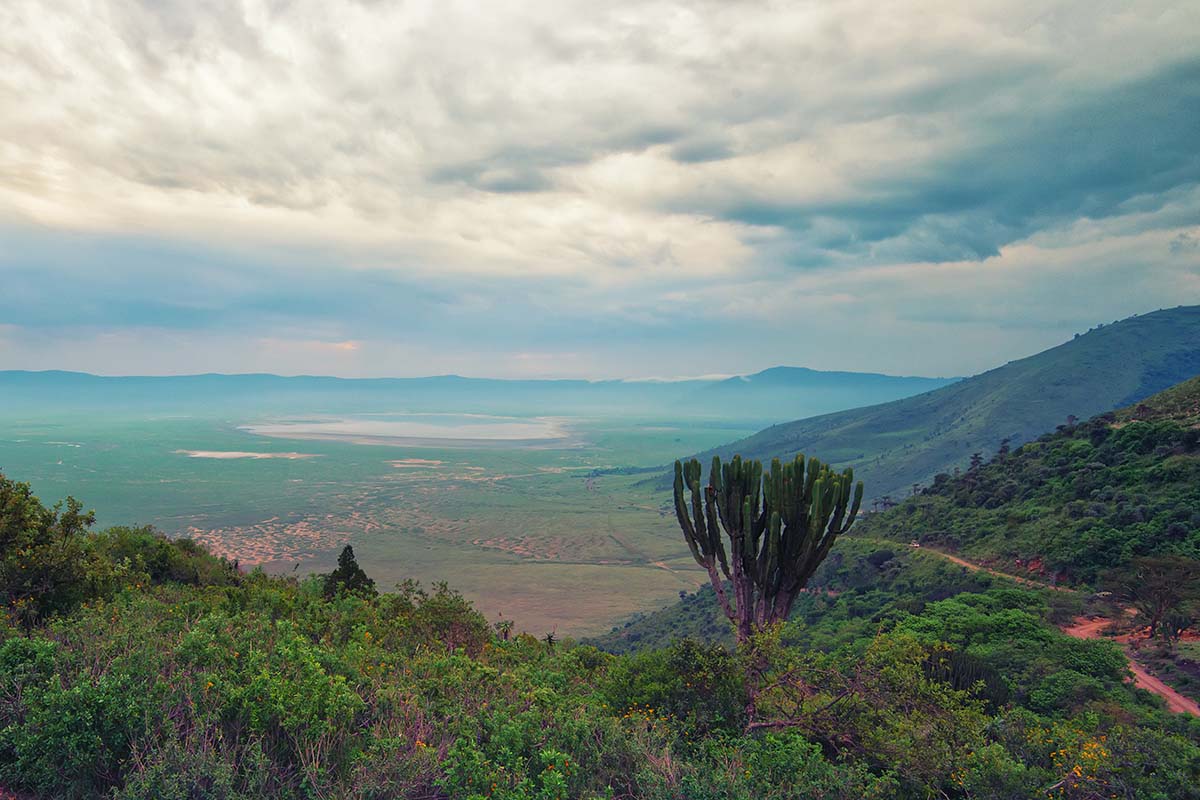
Ngorongoro Crater
There are few places on earth quite like this park. It houses the “Big 5” animals, deep volcanic craters, and is home to the semi-nomadic Maasai people. The most well-known crater in Africa, the Ngorongoro Crater, is one of the largest of its kind and a true marvel to behold.
The landscape consists of a mix of lakes, grasslands, swamps and wooded areas where domesticated Maasai livestock graze beside wild animals. There has been extensive archaeological research conducted on the property which has led to the discovery of fossilized footprints, and exhaustive evidence of human evolution. Today, it is a UNESCO World Heritage site and continues to be lead the way globally for its conservation efforts.
- Year-round wildlife viewing
- Watch the endangered black rhino
- Excellent accommodation
- See the Big 5 in a single day
- Costly
- Very crowded during peak season
Best time to visit: June to October
Nearby Attractions: Serengeti National Park, Lake Manyara National Park
Common Animal Sightings: Black rhino, wildebeest, zebra, gazelle, elephant, topi, buffalo, cheetah, lion, spotted hyena, leopard, golden jackal, bat-eared fox.
Serengeti National Park
Home to the Great Migration, Serengeti National Park easily makes its way into most bucket lists. This fascinating park presents all kinds of ecosystems which allows it to host a variety of plants, birds and animals. The sheer diversity makes it one of the most unique national parks in Africa. The yearly migration of wildebeest and zebra, followed by their predators, is unlike anything else in this world and has inspired people for generations. The parks name was given by the Maasai people, ‘serengit’, which means the land of endless plains. This is an accurate description, only small rocky outcrops, rivers, and few woodlands interrupt the short grasslands. There is an impressive array of animals taking up residence in the park Including the “Big 5” and is one of the largest and only migration patterns of its kind uninterrupted by human contact.
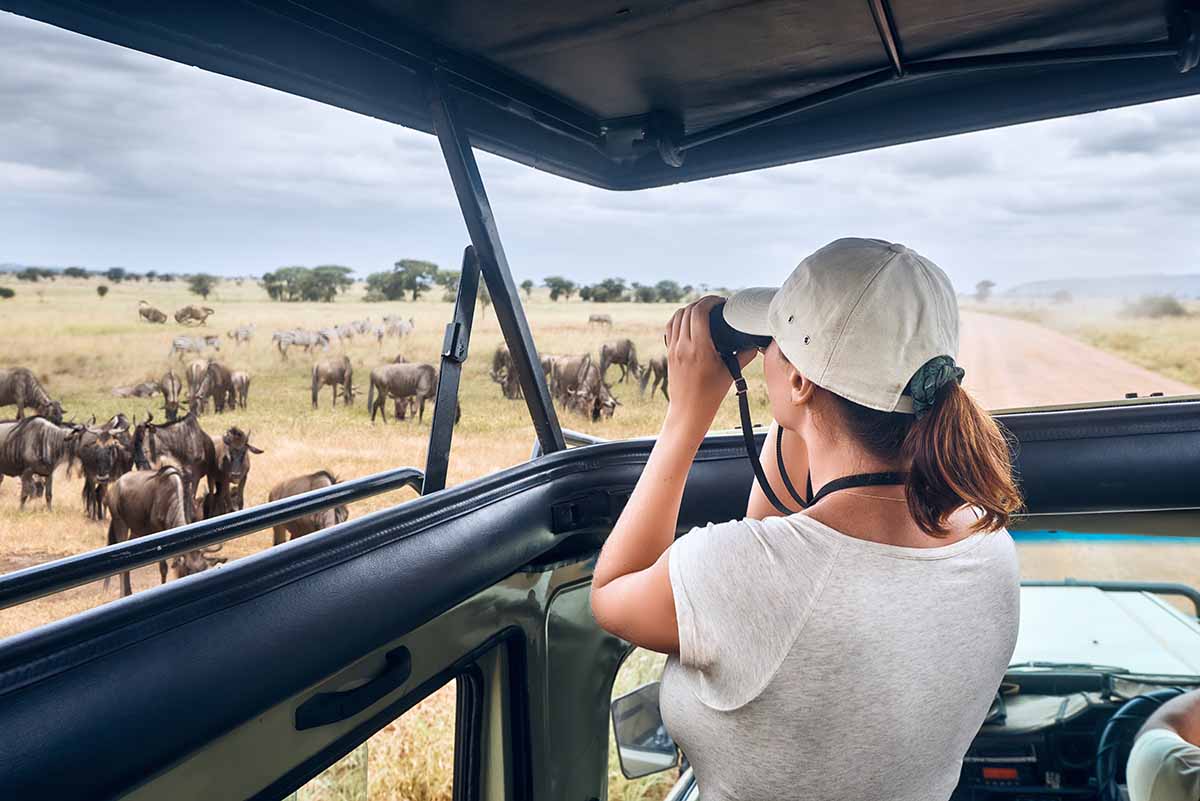
- Home to the Great Migration
- Authentic game viewing opportunities
- Hot air balloon safaris
- One of the best destinations to spot African predators
- Excellent accommodation options
- The park is very crowded during peak season (July to September)
Best time to visit: Throughout the year
Nearby Attractions: Ngorongoro Conservation Area, Lake Natron
Common Animal Sightings: Wildebeest, giraffe, gazelle, big cats, elephant, zebra, eland, topi, kongoni.
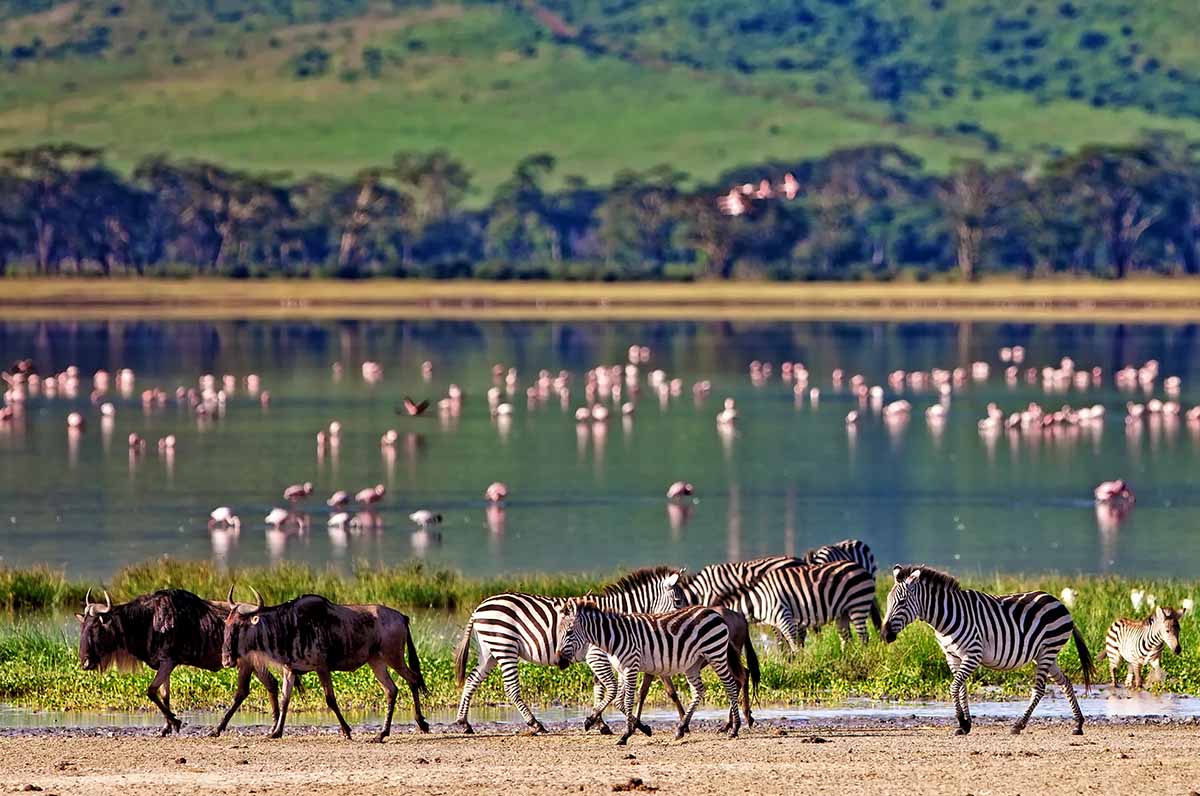
Lake Manyara National Park
Ernest Hemingway remarked that this park had the loveliest lake in Africa, and he may have been right. Lake Manyara is really stunning. It covers one-third of the park size, and despite its high salt content, it is safe for animals to drink so it remains an essential life source for many animals in the area. It is also the main hangout spot for wild flocks of flamingos, and other bird life. However, truly unique to Lake Manyara National Park is their resident tree-climbing lions. Researchers have still not come to a conclusion as to why these lions habitually laze among the treetops, but nevertheless, it is an extraordinary sight to see.
- Night safaris, hiking and trekking available
- Tree-climbing lions
- Splendid bird-watching opportunities
- See elephants from up close
- Breathtaking natural beauty
- Very crowded during peak season
Best time to visit: July to October
Nearby Attractions: Ngorongoro Conservation Area, Tarangire National Park
Common Animal Sightings: Baboon, flamingo, elephant, wildebeest, giraffe, blue monkey, buffalo, water-buck, impala, warthog, zebra, klipspringer, Kirk’s dik-dik, lion, leopard.
Nyerere National Park
Formerly known as Selous Game Reserve, this park represents the largest uninhabited area in the Africa continent, and this alone makes it worth visiting. The large untouched expanses of land showcase nature at its beautiful best. The park also presents the best bush vibe in Tanzania. Nyerere National Park is one of the two destinations used by elephants for their annual migration, and if watching millions of wildebeests isn’t possible, you can go for the next best thing, watching thousands of elephants at this park.
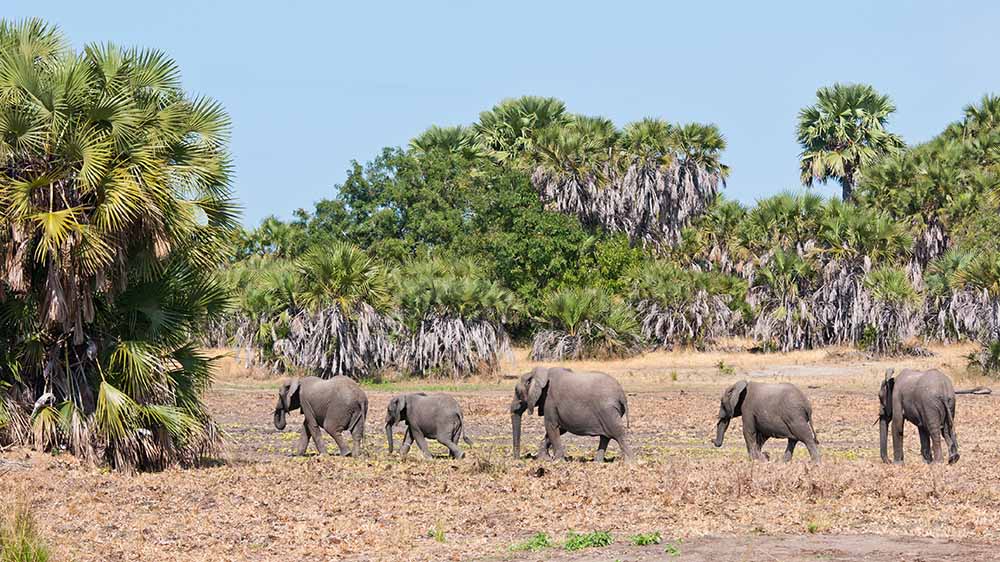
- One of the few destinations in Africa to see wild dogs
- Elephant migration Boat safaris available
- Excellent wildlife viewing opportunities during dry season
- Lion sightings are common
- Hunting is permitted
- Animals are scattered during wet season
- Compact wildlife viewing circuit
- Animal sightings are difficult during wet season
Best time to visit: June to October
Nearby Attractions: Dar es Salaam, Zanzibar
Common Animal Sightings: Elephant, wild dog, crocodile, black colobus monkey, hippo, antelope, bushbuck, sickle-horned sable, reedbuck, waterbuck and curly-horned greater kudu.
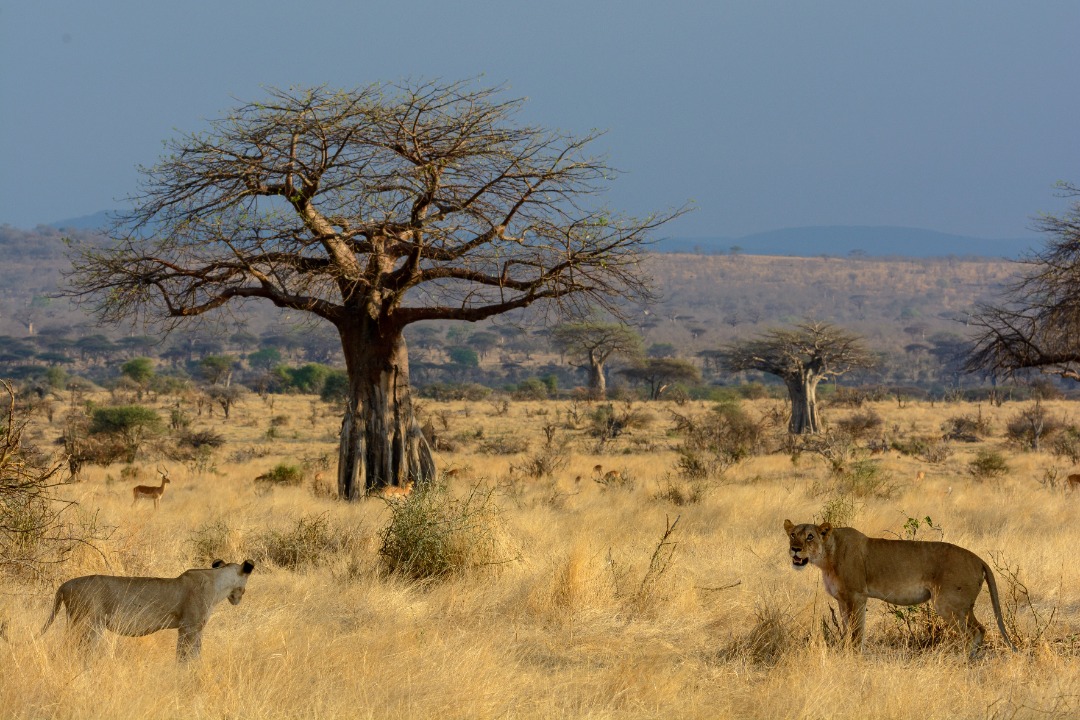
Ruaha National Park
Ruaha National Park became holds 10% of the world’s lion population and Tanzania’s largest elephant population. The park’s landscape is made up of giant mountains that lead Into vast grasslands, rocky outcrops, and a network of rivers. The largest of which, the Great Ruaha River, the park is named after. Visitors to the park are captivated by the lands red soil and legendary baobab trees as well as the large population of lions. Often prides of up to 25 lions are seen, sometimes attempting to take down a buffalo. Again, this park is relatively untouched by tourism but because of this, it is one of the best examples of how Africa has been for millenniums.
- Excellent Luxury accommodations
- One of the best destinations to see wild dogs
- Guided treks
- Unusual antelope species
- Doesn’t get crowded
- Remote location
- Lack of proper low-budget accommodation
Best time to visit: June to October
Nearby Attractions: Dar es Salaam, Zanzibar
Common Animal Sightings: Giraffe, greater kudu, sable antelope, lesser kudu, zebra, impala, bushbuck, buffalo, hartebeest, gazelle, waterbuck, elephant, lions, black-backed jackals, cheetahs, leopards, spotted hyenas and African wild dogs.
Lake Natron
A soda lake at the base of the active Ol Donyo Lengai volcano (the Maasai’s ‘Mountain of God), the area around Lake Natron is often described as having a desolate and almost lunar beauty. The lake gets its deep red colour from salt-loving organisms and algae. Lake Natron is the most important breeding site for Lesser Flamingos in the world, making preservation of the lake an environmental concern. It offers spectacular scenery that often seems implausible or unreal, as well as different wildlife. Here, you will appreciate how truly remote and sparsely populated it is. The landscape provides excellent opportunities for an adventurous walking holiday.
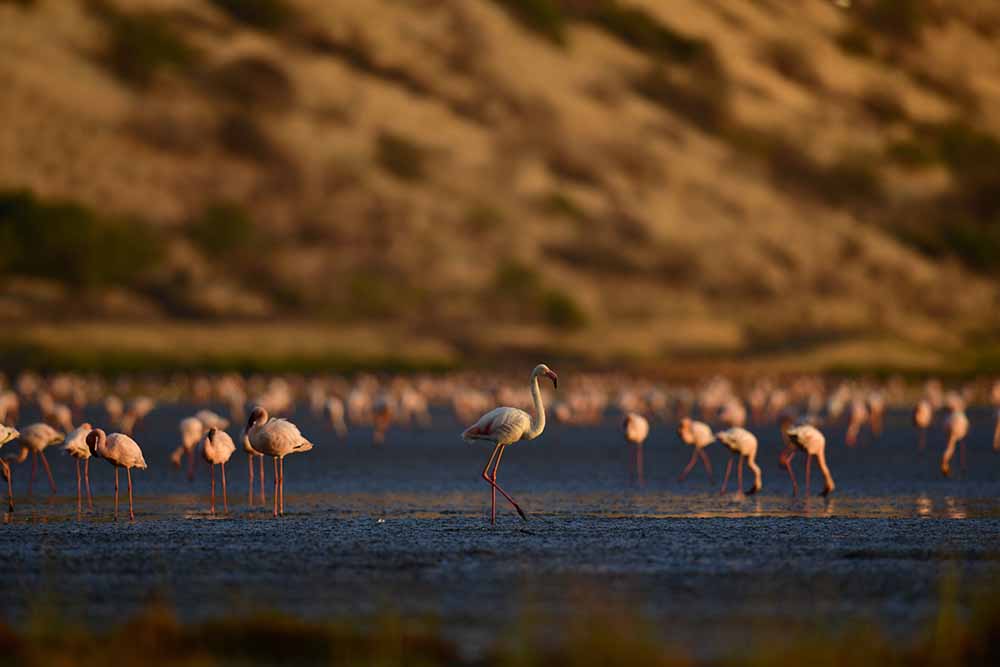
- Mesmerizing view of the Ol Donyo Lengai
- Walking with Maasai warriors
- Meet local tribes and customs
- The unique habitat of Lake Natron
- Animals sightings are difficult during wet season
Best time to visit: June to November
Nearby Attractions: Ngorongoro Crater, Lake Manyara National Park, Serengeti National Park
Common Animal Sightings: Flamingo, Lots of bird species, Fishes, Maasai goats, sheep and donkeys, Some small antelopes, Some zebras and wildebeests
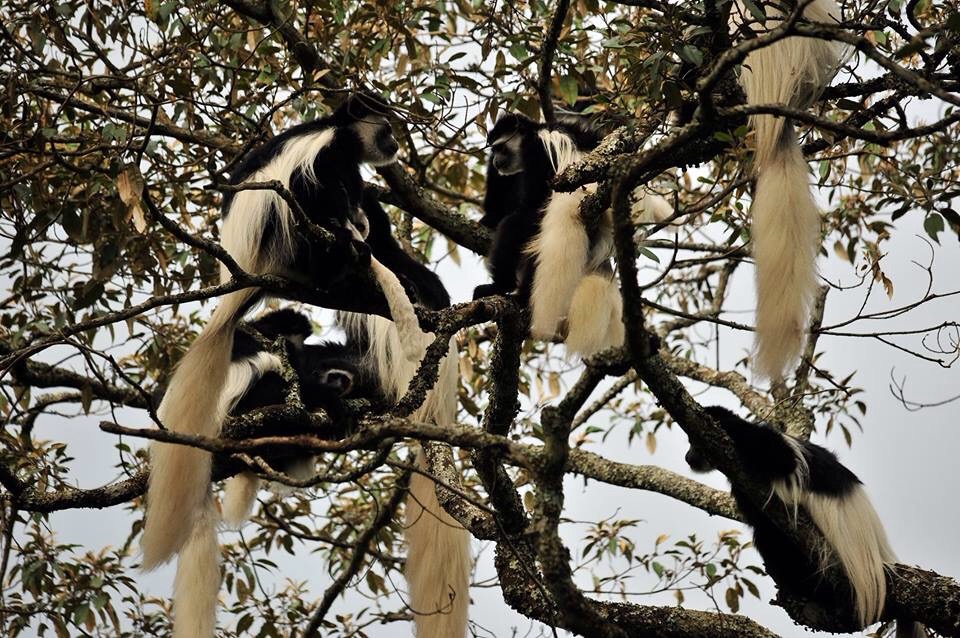
Arusha National Park
Although somewhat small in comparison to other national parks in Tanzania, Arusha packs a punch. It has truly varied vegetation made up of grasslands, rainforest, and alpine areas and thanks to these conditions it is home to incredible wildlife diversity. One of Africa’s largest mountains, Mount Meru occupies the space alongside a large concentration of giraffes. However, due to the size of the park, no more than a few hours are needed to see the entirety of it and can be explored via a walking, or canoe safari.
- Closer to Arusha city and Kilimanjaro International Airport
- One of the best destinations to see colobus monkeys
- Walking Safari
- Can be explored in few hours
- Animals sightings are difficult during wet season
Best time to visit: June to October
Nearby Attractions: Tarangire National Park, Lake Manyara National Park, Kilimanjaro National Park
Common Animal Sightings: Giraffe, waterbucks, buffalos, elephants, hippos, flamingos, and colobus monkeys.
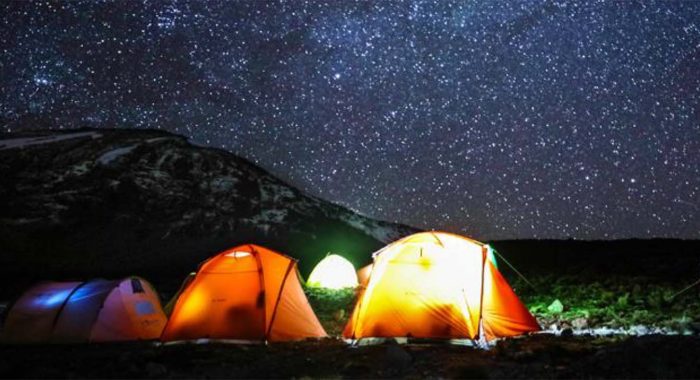
Mt. Kilimanjaro is a true definition of natural wonder that every adventurer is dreaming to conquer. At 5,895 m, Kilimanjaro is the highest point in Africa. Climbing to Uhuru peak takes 5 to 9 days depending on the route. The more days, the higher the possibility to conquer the summit. Each route offering different attractions and challenges. You only need to be fit enough and equipped with all the basic and necessary gears for hiking. Let us guide you to the summit.
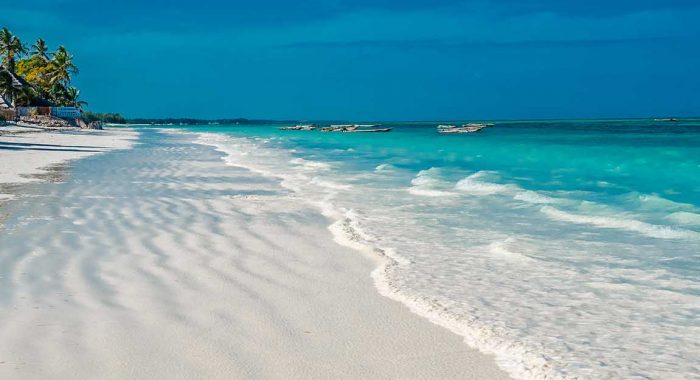
The allure of Zanzibar is timeless and magical. White sands and turquoise waters ring the island, and African, Indian, Arabic and Persian influences intertwine in Stone Town to form a rich cultural backdrop. Whether as post-safari relaxation or as a stand-alone destination, the beaches on Zanzibar offer a quintessential tropical island paradise.
For any information about your holiday in Tanzania, our expert team is here to assist you. Please fill in the below form and we will contact you immediately. Sometimes our e-mails can end up in the spam folder, so please check it within the first 48 hours from your request. We strongly encourage you to leave us your phone number and the best time to reach you to better understand your travel plans and offering you our best counsel based on your budget.














